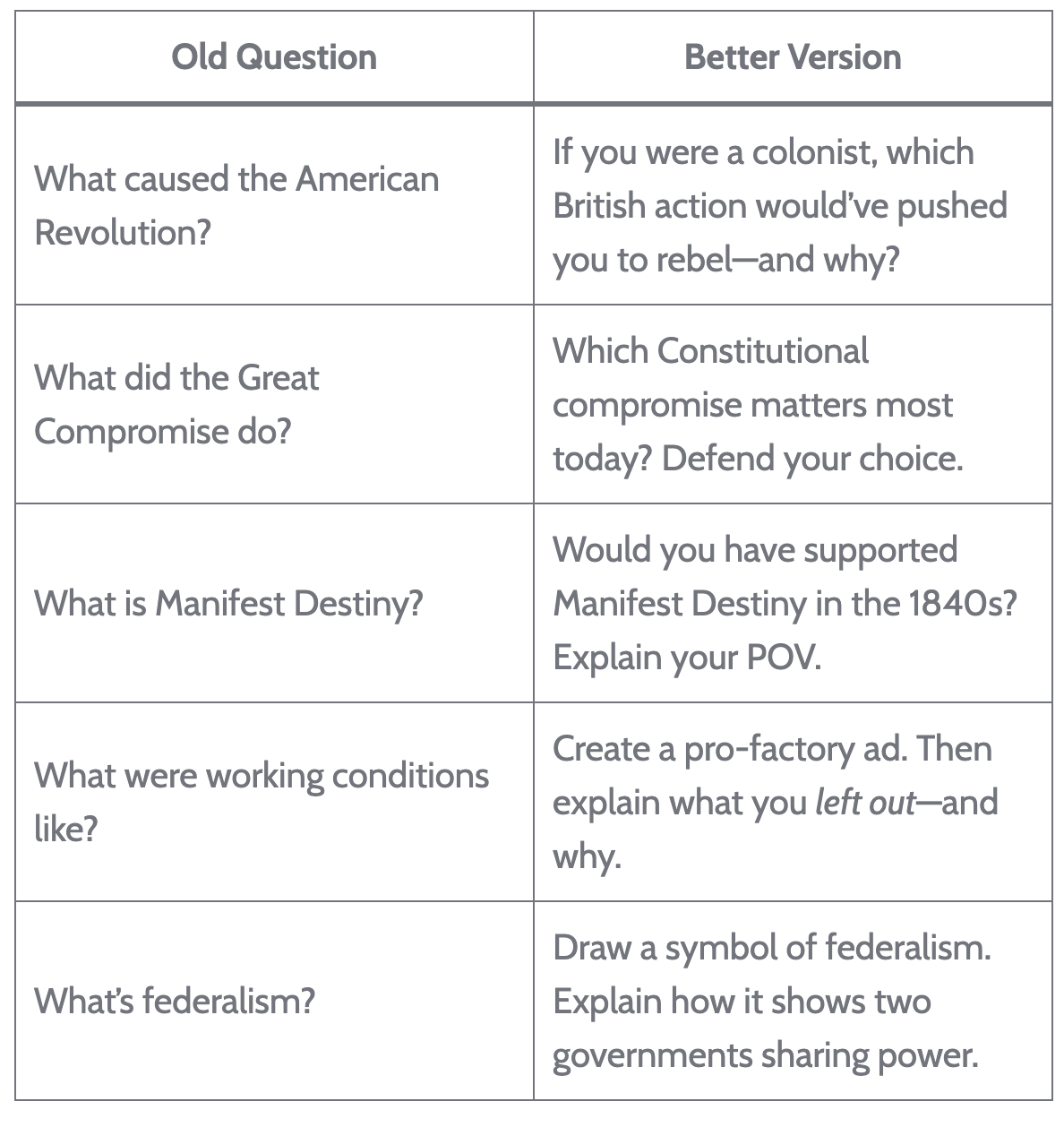A kid once turned in an answer to question 3 that just said: “Answers will vary.” It was clearly Googled and lifted from a teacher Weebly page of TCI answer keys.
I looked at it, shook my head, and said, “If you’re going to cheat, at least cheat correctly.” Then I realized the question I asked didn’t require them to think – it just needed Google… or now, from AI.
We’re in a world where students can Google or AI their way through any worksheet. So instead of harder questions, or. ore questions, we need better ones. Questions that actually require students to think, reflect, and decide.
Here’s how I’ve started reworking my questions:
These shifts help because AI can explain the facts, but it can’t choose for the student. When students have to justify, reflect, or take a position, it brings their voice into the work. AI might help them brainstorm, but it can’t replace their thinking.
Add Simple Reflection
Asking better questions helps, but building in quick metacognition takes it further. Here are 3 go-to prompts I use:
“What was the hardest part of this task—and how did you deal with it?”
“What part of your answer are you most confident in?”
“What changed your thinking today?”
Nothing over the top, just 1–2 sentences. We do it after Sketch & Tell-o, Thick Slides, Number Mania, or a writing task. It keeps the focus on how they thought, not just what they said.
Focus on the Process
During our Industrialization unit, I gave students a fake, rosy paragraph about factory life. Instead of writing something new, I had them revise it using evidence from our Number Mania activity (factory rules, fines, wages, etc.). The magic happened in the follow up: “What did you change—and why?”
That’s where I got real thinking. Students weren’t just reporting facts.
They were spotting spin, making decisions, and defending edits. That’s process.
Final Thought
If a chatbot can do the assignment better than your students, it’s time to change the assignment. Ask questions that need them. Build in time to reflect on the how, not just the what. Focus less on “finishing” and more on thinking out loud.
And when you start making these shifts, it’s eye-opening to see how much students have been relying on Google or AI to get by. The shortcuts get exposed, but so does the opportunity to help them become real thinkers.


